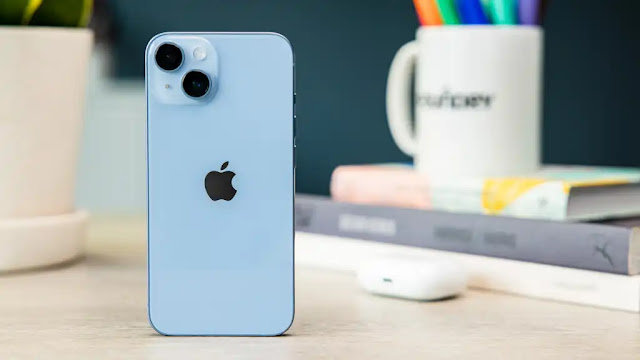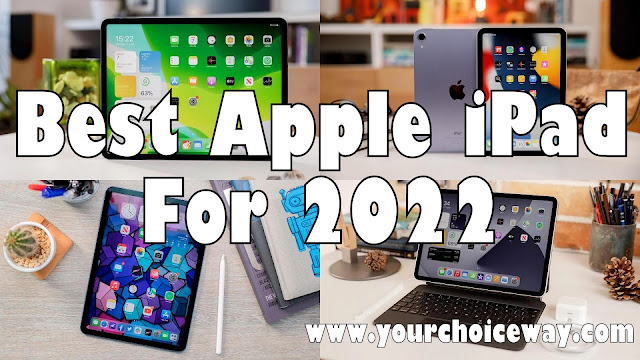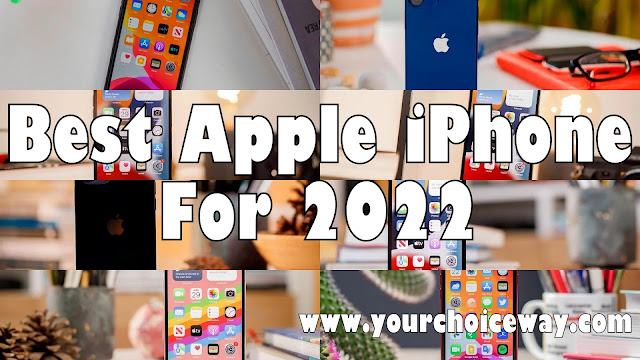A major update to the original formula, the Apple Watch Series 4 is a tempting smartwatch whether it's your first or you're upgrading from an older version.
Should I Buy The Apple Watch Series 4?
Our Verdict
- The updated Series 4 Apple Watch is a fantastic wearable. The bigger screen makes a huge difference, as do the niceties such as the haptic feedback when you turn the crown.
- WatchOS 5 is by far the best of its type, and its easier and speedier than even on the Series 4. You might not use all its features, but you'll find a subset indispensable.
- We can't yet test some of the health features, and would advise anyone tempted by the ECG feature to wait until it's available if that's your main reason for buying.
Price When Reviewed
- From $399
Apple has been iterating on the original Watch for several years now and the Series 3 is a great smartwatch. It's waterproof, has GPS and there's also a cellular version which means you can make and receive calls or stream Apple Music without needing your phone to be nearby.
For 2018, Apple has redesigned the Watch and the Series 4 raises the bar for what a smartwatch can be.
The new look, new interface and bigger screen are all reasons to upgrade if you've been holding off and sticking with your original or Series 1 watch.
There's a clear focus on health with the Series 4, from the updates to the Workout app to the ability to detect a heavy fall and notify you of potential heart issues. This won't be a turn-on for every potential buyer, but it makes the Apple Watch more attractive to those that might otherwise buy a Garmin or Polar watch.
The Series 4 starts at £399 / US$399 for the 40mm and £429 / US$429 for the 44mm.
If you want a built-in eSIM so you don't need to carry your phone around all the time, add £100 or US$100 to those prices.
Of course, that's the aluminium version, which is available in silver, gold and space grey.
There's also a stainless steel case which now comes in gold as well as silver and space black.
On top of this, there are Nike+ and Hemès versions, and various strap types. You can use the filters on Apple's website to pick your ideal combination.
The Nike+ model goes on sale in late October.
And if you go for the cellular model, EE supports it in the UK. It costs extra per month and is only available if you're already on a pay monthly contract, but is simple to set up and uses the same number as your phone, so people can ring you if you've nipped out to get a kebab for a run and left your phone behind. Vodafone has also said it will support LTE connections for the Apple Watch.
For those in the US, you have a choice of AT&T, Verizon, Sprint or T-Mobile.
Design And Build
Although it keeps its square shape, the Series 4 is noticeably different to its predecessors. It has more rounded corners and - most obviously - a bigger screen with smaller bezels. Cleverly watchOS 5 and virtually all of the watch faces have a black border so you can't really tell where the screen stops and the bezel starts: it just appears seamless.
The crown has been redesigned and now has haptic feedback which means you feel a clicking sensation as you turn it. This helps you to be more precise when scrolling through items, and it has a really satisfying feel.
The back is largely covered by the sapphire crystal which contains the heart rate monitor (now a combination of optical and electrodes), and it's now surrounded by black ceramic, a material which makes it easier for cellular signals to pass through for better reception.
A change you might not spot is that the microphone has been moved so it's now between the crown and button, which is better for phone calls as it reduced feedback and echo.
The crown also has an electrode built in, which you touch with a finger complete the circuit and enable the Series 4 to perform an electrocardiogram, one of the big new features.
Apple says the Series 4 is smaller and thinner, but in reality, you won't really notice the difference. However, if you have a 42mm Watch already, you can upgrade to the 40mm and have a screen that's just as big. Go for the 44mm and you'll get a noticeably bigger screen: more than 30 percent larger compared to the equivalent old model.
Weight has increased, with the 44mm aluminium model weighing 36.7g and the stainless version 47.9g.
The good news is that straps from older Apple Watches will fit the Series 4, and the magnetic charger is the same, although it now has a shorter wire.
Specs and features
- Bigger screen
- ECG
- Fall detection
- 50% louder speaker
- S4 chip
- Bluetooth 5
The screen isn’t just bigger: it uses a slightly different technology to previous models. It isn't the much-rumoured microLED, but is instead LTPO. Put simply, it's a way to reduce power consumption compared to LTPS.
It's still an OLED display with incredible black and bright colours and a maximum brightness of 1000 nits so you can still see it in sunny conditions. Resolution for the 40mm Watch is 394x324 pixels and 448x368 for the 44mm.
After just a few days' careful testing, the screen of our aluminium-cased Series 4 had picked up a few light scratches, which was slightly disappointing. These were visible only if you really looked for them, but it's a reason to spend more on the stainless model if that bothers you.
WatchOS 5 has been designed to make full use of the extra screen and there are a couple a great new faces including Infograph and Modular Infograph. The former is the one with the analogue clock and eight complications: four in the centre and four in the outer corners.
As you'd expect, you can choose what you see in each space: customisation is quick and simple.
This is quite a busy face, but if you love to have as much information available at a glance, it can't be beaten. The additional resolution allows for extra detail so you don't just see the current temperature or air quality figure: you also get lows and highs for the day.
If you're a fan of the Modular face, the centre complication can now show a graph of your heart rate, stock graphs and detailed activity. Plus, as complications have been opened up to developers, we expect to see this become even more useful.
But overall, the larger screen is a huge benefit if - like me - your eyesight isn't the best. Text is easier to read and buttons are that much easier to press, because they're bigger.
Maps is a good example of an app which works better on a bigger screen, and actually starts to become really useful.
ECG: Not yet
An electrocardiogram isn't something you typically see on a consumer device. In fact, Apple says the Series 4 is the first direct-to-consumer gadget that can perform an ECG. Except that it can't. At least not just yet.
US owners will be able to use the feature later this year when an update pushes the new ECG app to their phone. Unfortunately for us in the UK - and other countries - there is no set date on which it will arrive.
This means you can't take an ECG, or get alerts about potential heart problems such as atrial fibrillation until the feature is approved.
What you will get, though, is notifications of unusually high - and now low - heart rate. Plus, a more sensitive gyroscope means the Series 4 will detect a hard fall and can even phone emergency services if you remain inactive on the ground after such a fall.
The feature is enabled by default if you're over 65, but it's an opt-in deal if you're younger, which you'll have to manage via the Watch app on your iPhone.
watchOS 5
These might not be exclusive to the Series 4, but watchOS 5 includes some handy new features that make it even better compared to watchOS 4. One is activity competitions. You can now challenge a friend - someone you already share your activity data with - to a 'win the week' competition directly from the Activity app or even by responding to a notification.
Another update is to the Workout app which now detects when it thinks you've started a workout but forgot to open the Workout app and hit the start button. It will also try and figure out if you stop, but forget end the session.
Yoga and Hiking have been added as activity types, but it's runners who benefit most as the Workout app now shows cadence (steps per minute) and rolling pace, which is your average pace for the previous mile or km. You can set it to give you an alert if you fall behind on target pace, or are running quicker.
A fun new feature is Walkie-Talkie. It works just as you'd expect. Pick a contact (who has a compatible Apple Watch) and press the button to speak to them over Wi-Fi or cellular. This didn't work quite as smoothly as we'd hoped, with notifications from friends failing to arrive and communication becoming quite choppy on slow Wi-Fi networks. Not exactly a replacement for a real walkie-talkie, then.
Coming from an older Apple Watch, you'll really appreciate a few things. First is raise-to-speak. Instead of saying Hey Siri, you just move your wrist close to your mouth, spy/security guard style, and make your request.
Then, Siri will respond shoutily as the speaker is much louder than before. Then there's the water resistance. Unlike the original, the Series 4 is swim-proof and ejects water from the speaker housing when you pull up the quick settings menu and tap the water droplet.
Music
The Watch has always been able to store music locally and beam it to your ears via Bluetooth. Now, you can stream it from Apple Music directly through the Watch.
But if you'd prefer to just keep a playlist on the Watch itself, there's now 16GB of storage, which should be more than enough even for the longest hikes, runs or cycle rides.
Plus, podcasts are at last supported and can be downloaded. It's worth double-checking that the songs or podcasts have synced properly before you head out, though, as it's hard to tell just by looking at the list on the watch: you have to connect your headphones to listen to something as you can't play a test through the Watch's speaker.
Performance And Battery Life
With a brand new battery, battery life is far longer than the 18 hours Apple claims. In fact, you should easily get through a day of normal use (with no GPS or celluar) and to bedtime on the second day before the Series 4 is begging for its charger.
But head out on a run without your phone and GPS will sap the power at a faster rate. Apple says the new Watch can handle six, rather than the five hours of outdoor workouts the Series 3 could manage. Even if you're steaming music over LTE while working out, you'll still get four hours of battery life, one more than the Series 3.
So, although battery life is good, it isn't great. Apple still won't include any sleep-tracking features in watchOS because it says you'll need to charge the thing every night. You can get third-party apps, sure, but it'd be nicer if the battery lasted long enough for that to be an official feature.
In terms of 'speed' performance, the S4 makes watchOS 5 zip along at a rapid pace. Apps load while you blink and the whole interface feels buttery smooth. Bluetooth 5 brings faster wireless transfer speeds between Watch and phone. Although 2Mb/s isn't much, it's 100 percent more than 1Mb/s in previous Watches, and does make a difference.
Specs
- 40/44mm screen
- Apple S4 64-bit dual-core processor
- Accelerometer
- Gyroscope
- Fall detection
- Optical heart sensor
- ECG compatible
- Black ceramic rear
- Digital crown with haptic
- 18 hour battery life

















%20Review.jpg)






0 comments:
Post a Comment